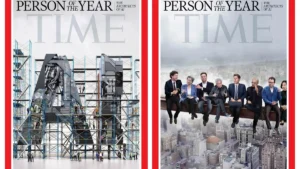The World Economic Forum (WEF) recently released its Travel and Tourism Development Index (TTDI) for 2024, offering a comprehensive evaluation of India’s standing in the global tourism landscape. This index is a crucial benchmark for assessing the competitiveness and sustainability of tourism sectors worldwide.
Travel & Tourism Development Index 2024 overall rankings
| Rank | Country | Score |
|---|---|---|
| 1 | United States | 5.24 |
| 2 | Spain | 5.18 |
| 3 | Japan | 5.09 |
| 4 | France | 5.07 |
| 5 | Australia | 5.00 |
| 6 | Germany | 5.00 |
| 7 | United Kingdom | 4.96 |
| 8 | China | 4.94 |
| 9 | Italy | 4.90 |
| 10 | Switzerland | 4.81 |
| 39 | India | 4.25 |
This table presents the top 10 countries ranked according to their scores, along with their change in rank, percentage change, and percentage difference from the leader (United States).
Key findings from the 2024 TTDI report include:
- India’s Current Ranking: India has secured the 39th position among 119 countries in the 2024 TTDI. This ranking reflects India’s overall performance across various indicators that contribute to a robust and sustainable tourism sector.
- Historical Comparison: In the previous index published in 2021, India was ranked 54th. This significant jump of 15 places in just three years demonstrates substantial improvements in India’s tourism ecosystem.
- Methodological Adjustment: It’s important to note that the WEF revised its methodology for the TTDI. As a result, India’s 2021 rank was retrospectively adjusted to 38th place. This adjustment allows for a more accurate year-on-year comparison, showing that India has maintained a relatively stable position with a slight improvement from 38th to 39th.
Areas of Improvement
The TTDI report highlights three key pillars where India has shown notable progress:
- Prioritization of Travel & Tourism: This improvement suggests that the Indian government and private sector have increased their focus on the tourism industry, recognizing its potential as a driver of economic growth and job creation.
- Safety & Security: Enhanced safety measures and improved security protocols have likely contributed to this advancement, making India a more attractive destination for international travelers.
- Health & Hygiene: In the wake of the global pandemic, improvements in health and hygiene standards have become crucial for the tourism sector. India’s progress in this area indicates a proactive approach to addressing health concerns and ensuring visitor well-being.
These advancements are particularly significant as they address key factors that influence traveler decisions and overall destination competitiveness.
International Tourist Arrivals
Global Context
The United Nations World Tourism Organization (UNWTO) barometer for May 2024 provides valuable insights into global tourism trends and India’s position within them:
- Global Arrivals: In 2022, the world recorded 975 million International Tourist arrivals. This figure represents a significant recovery in global tourism following the disruptions caused by the COVID-19 pandemic.
- India’s Performance: Within this global context, India welcomed 14.3 million International Tourist Arrivals. This impressive number underscores India’s appeal as a diverse and vibrant tourist destination.
- Market Share: India’s 14.3 million arrivals translate to a 1.47% share of the global international inbound tourism market. While this percentage may seem modest, it represents a substantial volume of visitors and indicates significant potential for growth.
Regional Performance
Zooming in on the Asia & Pacific region:
- Regional Share: India’s share of International Tourist Arrivals in the Asia & Pacific region stood at 15.66% in 2022. This figure is particularly noteworthy, as it positions India as a major player in regional tourism.
- Comparative Analysis: The 15.66% share in the Asia & Pacific region, compared to the 1.47% global share, highlights India’s strong performance within its immediate geographical context. This suggests that India is particularly successful in attracting tourists from neighboring countries and the broader Asia-Pacific area.
Promotional Strategies and Initiatives
Holistic Marketing Approach
The Ministry of Tourism has adopted a comprehensive and multifaceted strategy to promote India’s tourism destinations and products both domestically and internationally:
- Integrated Marketing: The ministry employs an integrated marketing approach, ensuring consistency across various promotional channels and targeting different segments of potential tourists.
- Collaborative Efforts:
- Travel Trade Partnerships: Collaborations with tour operators, travel agencies, and other industry stakeholders help in creating and promoting tailored travel packages and experiences.
- State Government Cooperation: Working closely with state governments allows for the promotion of diverse regional attractions and ensures that local tourism initiatives align with national strategies.
- Indian Missions: Leveraging the network of Indian diplomatic missions abroad helps in reaching international audiences and facilitating tourism-related services.
- Digital Presence:
- Website Optimization: The Ministry’s official website serves as a comprehensive resource for potential visitors, offering information on destinations, travel tips, and cultural insights.
- Social Media Engagement: Active presence on various social media platforms allows for real-time engagement with potential tourists, sharing of captivating content, and addressing queries promptly.
- Promotional Materials: Development of high-quality brochures, videos, and other promotional materials that showcase India’s diverse tourist destinations, from historical monuments to natural wonders.
International Presence
To increase India’s share in the global tourism market, the Ministry of Tourism maintains a strong international presence:
- Participation in Travel Fairs and Exhibitions: Regular participation in major international travel and tourism events provides a platform to showcase India’s tourism offerings to a global audience.
- Target Market Strategy: Focus on both established markets with a history of sending tourists to India and emerging markets with high growth potential.
- Customized Promotions: Tailoring promotional efforts to suit the preferences and travel patterns of different international markets.
Government Initiatives
Champion Service Sector Scheme (CSSS)
The Champion Service Sector Scheme demonstrates the government’s commitment to enhancing tourism infrastructure:
- UDAN Scheme Support: Under CSSS, the Ministry of Tourism reimburses the Ministry of Civil Aviation for expenses related to the UDAN (Ude Desh ka Aam Nagrik) Regional Connectivity Scheme.
- Financial Commitment: To date, a substantial sum of Rs. 226 Crore has been reimbursed. This significant financial support underscores the government’s recognition of air connectivity as a crucial factor in tourism development.
- Impact on Tourism: By supporting the UDAN scheme, the ministry is indirectly contributing to improved air connectivity to smaller cities and towns, thereby opening up new tourism destinations and dispersing tourist traffic beyond major cities.
RCS UDAN Tourism
This initiative specifically targets the improvement of air connectivity to important tourist destinations:
- Operational Routes: Currently, 53 tourism routes are operational under this scheme. These routes have been carefully selected to enhance access to key tourist spots across India.
- Benefits for Tourism:
- Increased Accessibility: The scheme makes it easier for domestic and international tourists to reach a wider variety of destinations, including those off the beaten path.
- Balanced Tourism Development: By improving connectivity to lesser-known destinations, the scheme helps in distributing tourism benefits more evenly across different regions of the country.
- Potential for New Tourism Circuits: Enhanced air connectivity allows for the development of new tourism circuits, combining multiple destinations that were previously difficult to link in a single itinerary.
Analysis and Future Outlook
India’s tourism sector shows promising signs of growth and resilience, as evidenced by its improved global rankings and increased international arrivals. The government’s multifaceted approach, combining strategic promotional efforts with substantial infrastructure investments, demonstrates a strong commitment to unlocking the full potential of India’s tourism industry.
Key factors contributing to this positive trajectory include:
- Diverse Tourism Offerings: India’s rich cultural heritage, varied landscapes, and unique experiences continue to attract a wide range of tourists.
- Infrastructure Development: Ongoing improvements in transportation, accommodation, and tourist facilities are enhancing the overall visitor experience.
- Digital Transformation: Increased use of technology in promotion and tourist services is making it easier for potential visitors to discover and plan their trips to India.
- Focus on Sustainability: Growing emphasis on sustainable and responsible tourism practices aligns with global trends and appeals to environmentally conscious travelers.
- Regional Cooperation: India’s strong performance in the Asia & Pacific region suggests potential for further growth through regional tourism initiatives and partnerships.
Challenges and opportunities for the future include:
- Post-Pandemic Recovery: Continuing to adapt to the evolving global tourism landscape in the wake of the COVID-19 pandemic.
- Capacity Building: Enhancing skills and service quality in the tourism workforce to meet international standards.
- Balancing Growth and Conservation: Ensuring that tourism development does not come at the cost of environmental and cultural preservation.
- Leveraging Technology: Further integration of digital solutions in tourism services and marketing to stay competitive in the global market.
As India continues to implement and refine its tourism strategies, the sector is well-positioned for sustained growth, contributing significantly to the country’s economic development and cultural exchange on the global stage.
This comprehensive overview, based on information provided by Union Minister for Tourism and Culture, Shri Gajendra Singh Shekhawat, in a written reply to the Rajya Sabha, underscores the government’s focused approach and ongoing commitment to fostering the growth and development of India’s vibrant tourism sector.




 TIME Magazine Names ‘Architects of AI’ a...
TIME Magazine Names ‘Architects of AI’ a...
 World Inequality Report 2026: Key Findin...
World Inequality Report 2026: Key Findin...
 Indian-Origin Arkin Gupta Named in Forbe...
Indian-Origin Arkin Gupta Named in Forbe...







